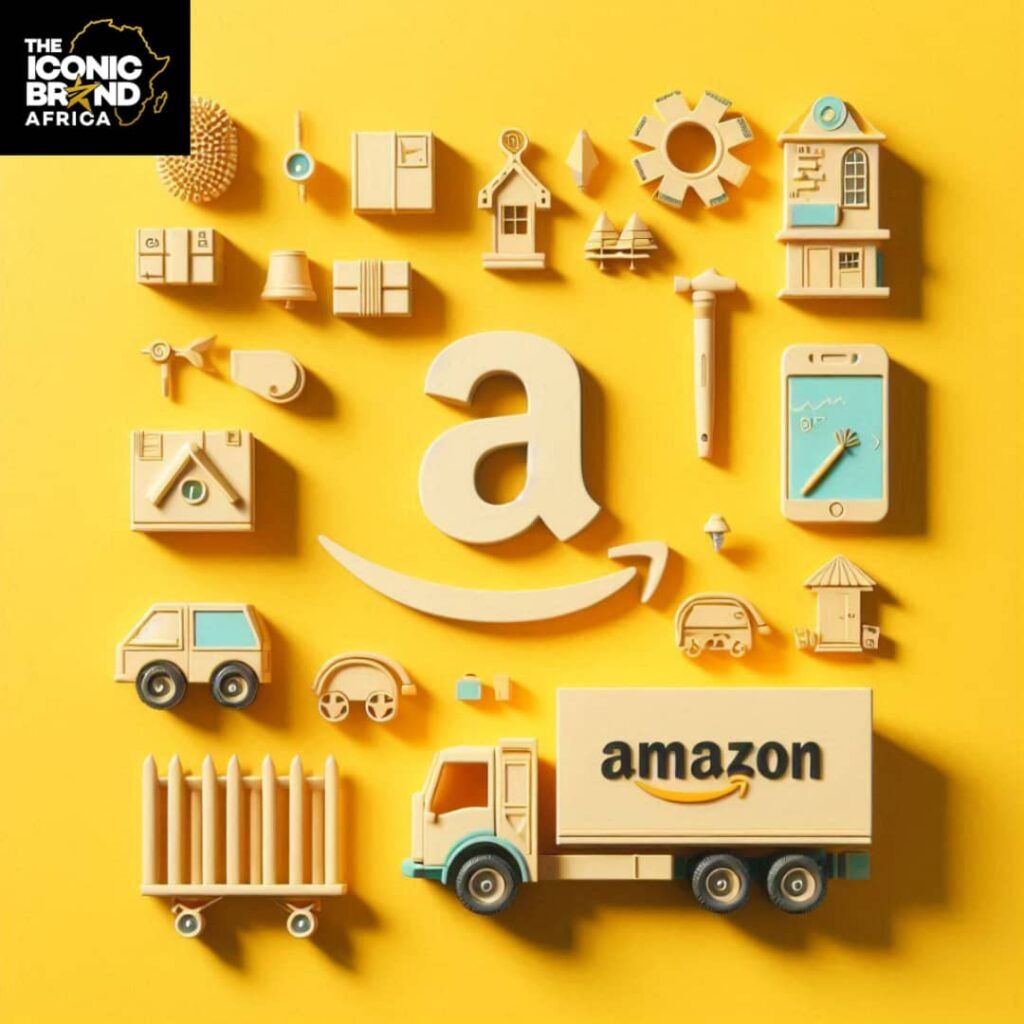“Don’t concentrate on your competitors, concentrate on your customers.” — Jeff Bezos.
Ever stopped to wonder why Amazon still remains king amidst failed partnerships, criticisms, and claims of terrible working conditions in their warehouses and lawsuits? They prioritize their customers over competitors.
How it all started.
Amazon is an American technology company engaged in e-commerce, cloud computing, video streaming, etc. It was founded on the 5th of July, 1994 by Jeff Bezos. It started as an online store for selling books but it has since diversified its product portfolios. Back then, books were bought online through mailing.
Amazon, popularly referred to as “The Everything Store” has been known to be the disruptor of the e-commerce space. It is among the top 5 American technology companies. Others being Alphabet (the parent company of Google), Apple, Meta (the parent company of Facebook) and Microsoft. In 2017, Amazon took over from WalMart as the number one e-commerce brand in the world. Reading their story made us realize that Jeff Bezos is the “e-commerce god.”

What has distinguished Amazon? Customers over competitors
- Vision: The vision of Amazon is to be “the most customer-centric organization on earth.” They started from selling books online to ease your stress of visiting a bookshop to selling everything so that you don’t need to step out of your house.
You might not see the whole road but keep your destination in mind. Have a clear vision of what you want your brand to do for your customers. This means you must master your target audience. Your vision should be inspirational, concise, actionable and measurable. This can be revised with time. It’s been thirty years and we are still talking about Amazon.
- Customers over competitors: Amazon’s mantra is centered on simplifying and enhancing user experience. Their online purchase processes and delivery processes are all geared towards customer satisfaction. You write a book, you publish on Amazon Kindle, Amazon prints hardcover with 2-day free shipping. They are all about you. They prioritize their customers over competitors. Borrow that leaf from Amazon.
As a brand, your product or service is not for you and your family members, it is all about your customers/ target audience. Channel your energy towards satisfying your customers by prioritizing them over your competitors. Your competitive research should be to prioritize customer satisfaction and not to topple your competitors.
Now check out Amazon’s physical bookstores and take note of the following:
- The shelf arrangement of books enables the customer to see the whole book cover, not just the spine. Unlike other book stores that try to conserve space and display just the spines of books, Amazon allows you to get a full picture at a glance.
- Another customer-centric approach involves the use of psychology. Instead of just arranging books using genres, they also arrange books based on what they could be used for. For example: Gift for the gamers, Gifts for young adults, etc.
- The customer review of each book is displayed below the book so you could get a feel of what the book is about.
- Innovation: Amazon does not just sell books online, they reinvented the reader’s experience online. They replicated the online store offline into a physical book store. They didn’t want to erase the experience of visiting a physical bookstore. Study the trends of Amazon like the Amazon Web Services (AWS) came in line with the trend.
AWS is the cloud computing service of Amazon. Given that most businesses have migrated online, there is even a greater need for cloud security. As a brand, watch out for trends, innovate and diversify where necessary. In this case, marrying more than one ‘wife’ is allowed. - Diversification/Wide Product Portfolio: Amazon has acquired more ‘wives’ since it started. This has increased its market share and revenue. You have been selling one product since you started but it’s not trending again, then, diversify.
From selling books, Amazon acquired The Whole Foods Market with 300 million customers. This greatly increased their market share and revenue. They offer a wide range of products that once you start shopping, you will never visit another store. - Marketing: It is not the best product that wins the market, it is the best marketed product that wins the market. You may think you are advertising your products on amazon.com but you are marketing Amazon. Amazon is ruthless in ads for generating both paid and organic traffic. You indirectly push Amazon to more people as you share your affiliate links. This open policy of Amazon also makes it customer-centric.
Invest in marketing as a brand. Your brand may be the best but we don’t know you, if you are too quiet. We can’t put a stake on you.
Your brand should be about your customers not your competitors. Even your marketing should focus on the benefits of your product or service to them. Nobody cares about the features of your product or the services you offer if it doesn’t benefit them. “Features tell, but benefits sell.” Keep that in mind. - Pricing strategy: Amazon prices online are the same offline. Their physical stores don’t bear price tags on items, rather, codes to scan because they adjust as customer preferences change.
They also offer competitive prices on products making their products irresistible. Set your prices to be competitive if you can, as a brand. Look at the bigger picture and not at the immediate gratification. You can offer value for free to generate those leads. - Data-driven decision making: Do you think you just list your product on Amazon for free? Your payment is data. Amazon gleans insights from people who browse your products and predict customer behaviors. If your product does well, they replicate the same product and label it “Amazon’s choice.” Then you keep wondering what happened to all your customers. Never neglect your analytics as a brand. Study customer trends to make data-driven decisions that will propel your brand forward.
- Competitiveness: Yes, every industry is a jungle. It is “survival of the fittest.” Never underestimate the power of your competition. Amazon studies its competitors well enough. Where necessary, Amazon forms partnerships or buys off competitors. This is not an encouraged anti-competitive activity but it’s a survival tactic. Dufil Prima, the makers of Indomie noodles bought off Dangote noodles, Microsoft acquired Nokia, etc. These things happen in the battle for survival. Amazon can sell at a loss to gain the market shares of a competitor.
- Strategic Partnership building: Amazon partners with independent suppliers to sell on amazon.com. It gets exclusive rights (patents) to sell certain products as well. Build partnerships with other brands that offer complimentary services or sell complementary products. This will increase your visibility, market share and boost your ROI.
- Economic moat: Moat is derived from a pool of water built around the medieval castles back in the days which was meant to protect the castle from invaders. The wider the moat, the more difficult it is for enemies to penetrate the kingdom.This economic moat is the ability of a brand to maintain its competitive advantage over other competing brands and this can be as a result of being around for too long. This makes it difficult for newer brands to break into the market. This is also a reason why it might be difficult to topple Amazon.
In essence, don’t rush to be like Amazon, it took 30 years to get here. To excel and stand out as a brand, learn the following from Amazon: prioritize your customers not your competitors. Be patient, consistent and maintain your unique value proposition.
You can start by carrying out a SWOT analysis of your competitors. What are they doing? Then find an opportunity within their weakness to distinguish your product or service to better satisfy your customers and ease their pain as you meet their needs. Your goal should be to prioritize your customers over your competitors.
(SWOT- Strengths, Weaknesses, Opportunities, Threats).
